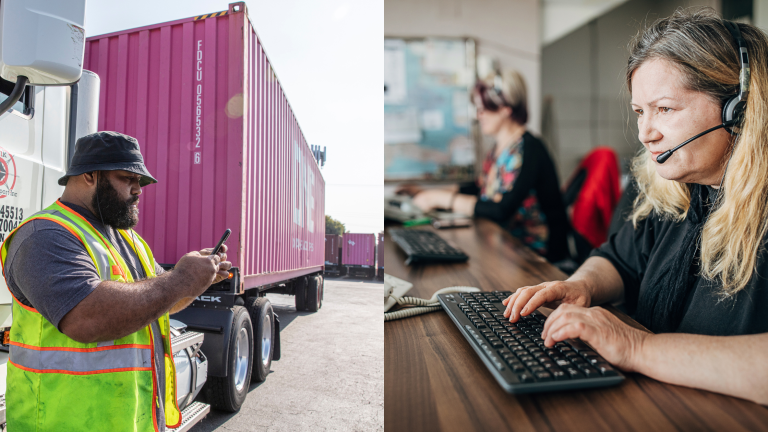Intermodal freight transport has become increasingly popular in recent years nationwide. Booming freight hubs such as Chicago, Los Angeles, Houston and New York City rely heavily on intermodal freight transport to accommodate the mass amounts of freight that pass through their cities everyday.
For some companies, intermodal transport is becoming a safer, faster and more affordable option than OTR trucking. While OTR remains a valuable asset to the freight industry, we can only assume that more companies will begin to use intermodal freight transport as a tool in the future.
While we’re sure this isn’t the first you’ve heard of intermodal shipping, we want to be clear on what it is, how it works and how it stands to benefit your bottom dollar.
What is Intermodal Freight Transport?
Intermodal freight transport, or intermodal shipping, is the process of using multiple methods of transportation to move goods. Shipment methods include rail, ship and truck.
How Does Intermodal Shipment Work?
While all three methods can be used — for instance ship, to rail, to truck — the most common methods are rail and truck. Typically, a shipment will be loaded from a truck to rail, then back to a truck for it to reach its final destination.
What is Drayage?
When using intermodal shipment, you’ll likely need a drayage service as well. Drayage is short distance trucking that is a part of a long distance freight shipment. For example, your shipment may be transported from vessel to rail to reach its destination. However, the rail won’t be able to transport your shipment directly to its destination, in which case you would require a drayage service.
When is Intermodal Freight Transport Recommended?
Intermodal freight transport is ideal for carriers who have longer, cross-country hauls — especially for those who have frequent LTL, less than truckload, shipments. If you are commonly shipping to the same destination every week, intermodal shipment can help you save money and time, as well as reduce your company’s carbon footprint.
What are the Benefits of Intermodal Freight Transport?
Now that we have established a shared understanding of intermodal shipping, let’s discuss the five key benefits of intermodal freight transport:
- Cost Efficient – One of the greatest benefits of intermodal shipping is its cost efficiency. Like every company, you value outlets that make money as well as save money. And why shouldn’t you? Intermodal freight transport requires less fuel to complete a shipment, which means more money in your pocket.
- Flexible – Using multiple methods of shipment opens you up to a variety of options. Locations of different modes of transportation can be found all across the country, allowing you to be more flexible with your shipment. Intermodal shipping provides the flexibility to find the ideal method of shipment, at the ideal time and at the ideal cost.
- Reliable – Finding reliable shipment options isn’t always easy, which is why it’s important to invest in an option that streamlines the process. Intermodal shipping schedules are set ahead of time for truck and rail, providing you with a more reliable and predictable solution.
- Sustainable – Less fuel means less carbon emissions. In fact, a truck driving long distance produces approximately twice as much carbon emissions as intermodal rail. Intermodal shipping allows your company to reduce its carbon footprint, and work towards a more sustainable, eco-friendly option. In today’s economy, vying for sustainable solutions are paramount — it simply can’t be ignored anymore.
- Time Efficient – Trucks getting stuck on the highway is a commonality in long distance trucking, costing you time and money. Intermodal freight transport provides less opportunity for congestion. Less congestion means that your shipment can arrive to its destination sooner and on time.
What to do When Challenges with Intermodal Freight Transport Arise?
What happens when your shipment is on hold, or is turned away due to high volume? You need to find a way to store that shipment until it can be transported that doesn’t negatively affect your bottom dollar.
Easier said than done? Not necessarily.
SecurSpace realizes that intermodal freight transport is a growing tool for shippers. However, as volume continues to increase, unfortunately so will complications with the system. While members of the freight industry continue to find solutions to these ongoing complications, these problems aren’t going away overnight.
When you need to store your shipment, you can trust the SecurSpace streamlined platform to locate and book the storage you need quickly and efficiently. In just three easy steps, you’ll be able to find, access and store equipment through one of SecurSpace’s hundreds of Partners. So the next time you’re stuck between a shipment and a hard place, trust the SecurSpace platform to take care of the hard work for you.
Editor’s note: This blog was originally written for SecurSpace, The Benefits of Intermodal Freight Transportation




